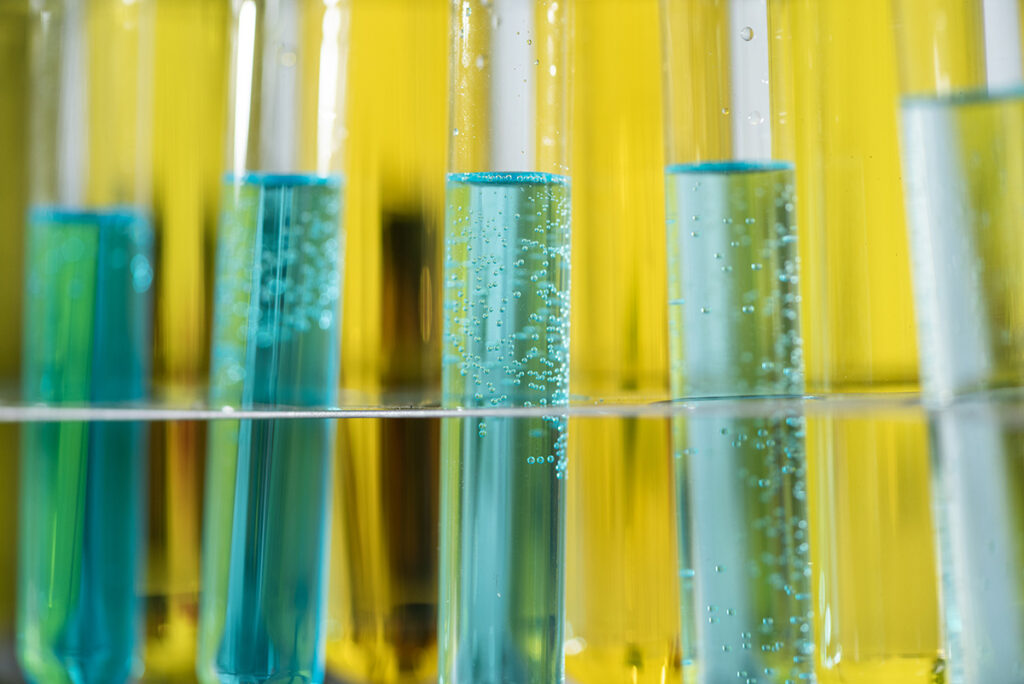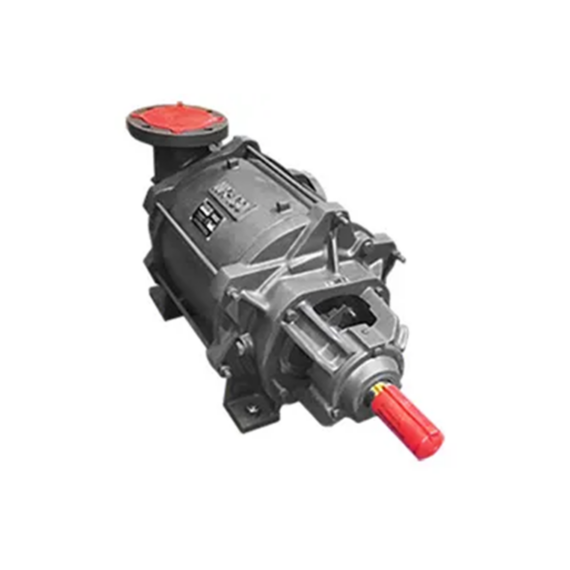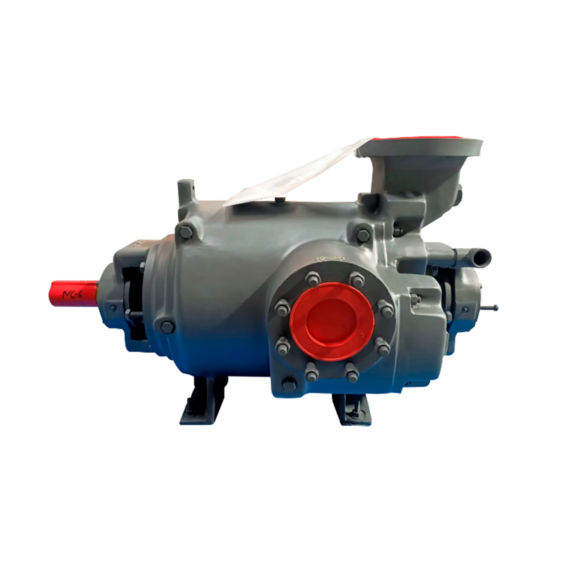
Liquid Ring Vacuum Pumps for Biofuels & Digester Gas Compression
Landfills worldwide decompose and produce methane. Methane is an energy-rich gas that interacts with oxygen to produce a combustion reaction. It is also approximately twenty-eight times more effective at increasing the earth’s temperature than carbon dioxide. It is within the best interest of the environment and the modern energy issue to use this biogas as a fuel source rather than leaving it as a waste product. Methane production can be accelerated through the decomposition of biomass within anaerobic digesters.
Biowaste is crushed to homogenize the mixture, whether it be sewage, grain, molasses, animal fat, or animal manure. This mixture is fed into an anaerobic digester. This digester is deprived of oxygen so that microbes can perform anaerobic digestion. The biomass is heated and stirred, and the fermentation process begins. Hydrolysis breaks down the complex fats and polysaccharides into their monomerized form. Fermentative bacteria digest the monomers, producing hydrogen and carbon dioxide gas. Hydrogen can be used as an alternative energy source, but to produce the calorically dense methane, archaea called methanogens use the gasses and acetic acid produced by the digestion of the monomers to produce methane. The result is biogas, containing 40-70% methane, with the remaining gas being carbon dioxide and small amounts of sulfur.
This sulfur reacts with hydrogen to form hydrogen sulfide, which is incredibly corrosive to many metals. If the biogas is pumped to a boiler for power generation like this, the boiler would last only a fraction of its expected lifespan. The gas is separated from the hydrogen sulfide and compressed. This remaining compressed gas can either be burned to provide electrical power or distilled to use as clean-burning vehicle fuel.
To distill the biogas, it is pumped into a large distillation column at a certain height above the bottom. A temperature gradient is applied to the column. The molecules with lower boiling points begin to rise to the top of the column while those with higher boiling points sit closer to the bottom and are exposed to more heat. The column is separated into sections that fill with a different component of the biogas. These sections are individually piped to separate condensers and pumped away. The result is pure methane.
Applications of Liquid Ring Vacuum Pumps
The anaerobic digester tank needs to be deprived of oxygen so the anaerobic methanogens can produce methane. Aerobic digestion does not produce methane, so it cannot be applied in this situation, although it is helpful for general bio-waste treatment when it comes to factors such as odor control or corrosion prevention. A common way to evacuate the oxygen content of the digester is to introduce it to vacuum conditions. Once a vacuum is attached to the digester, anaerobic digestion is greatly encouraged and the anaerobic microorganisms are able to digest and reproduce at a rapid rate. This leads to an increase in methane production rate and, by extension, digester efficiency. Using a liquid ring vacuum pump in this case is recommended. This is a dirty process with combustible gasses and condensable vapors as the heated biomass is introduced to the water inside the digester. Upon proper material selection such as Stainless Steel 316, the liquid ring vacuum pump can be explosion-proof, and the pumping process is near isothermal. These two considerations provide safe handling of the extremely combustible methane gas. The liquid ring will condense all of the condensable gasses, increasing pump efficiency, and it will not hinder the pump’s performance, unlike dry-running pumps that are sensitive to moisture. Any dirt or airborne particulate may pass through the pump without clogging it or affecting its vacuum pressure. In the case of damage, the pump is designed with very few parts, making repair and maintenance easy.
After the biogas is produced, it is pumped away with hydrogen sulfide. The correct metallurgical decisions will give a corrosion-resistant pump feeding the mixture to a discharge separator. Methane has a lower molecular weight and much lower boiling point than hydrogen sulfide, so it will be pumped from the top of the discharge separator while the hydrogen sulfide turned sulphuric acid by liquid ring will be exhausted toward the bottom. This will prevent the piping damage that the hydrogen sulfide is able to inflict. Any water vapor that is accidentally pumped from the digester tank will not affect the long lifespan of the pump or the constant value and control of the vacuum pressure. This same pump is removing oxygen from the digester tank, compressing the biogas in a safe way and helping to remove the hydrogen sulfide at a quicker pace.
Once the hydrogen sulfide is removed, the remaining biogas may need to be distilled to achieve the purity of methane desired for transportation fuel. A common method of biogas processing is vacuum distillation. Maintaining the distillation column at sub-atmospheric pressures makes the biogas components evaporate and rise with less heat energy compared to atmospheric conditions. In addition to this, any gaseous azeotropic mixture within the biogas will be subjected to this pressure, discouraging the dynamic chemical equilibrium achieved before and encouraging further separation and purity of individual components. Pumping each component from their condensers is not an issue because with a corrosion-resistant and explosion-proof chamber with an isothermal pumping process and condensing liquid ring, the liquid ring vacuum pump is able to transport gas or liquid, non-condensable or condensable, explosive or inert. Slugs of liquid will not significantly affect the performance of the pump, and once installed with proper operation and maintenance, it can last for a very long time. It is very simply designed and easy to repair, so re-installation costs are quite low as time accumulates. Our NC Series and NX series vacuum compressors with mechanical seals are used for the application.


